In the modern agricultural industry, precision and efficiency are critical to meeting the nutrient demands of diverse crops. One of the most effective ways to ensure tailored fertilization is through the use of fertilizer mixing and blending systems. These systems enable the production of customized fertilizer formulations by accurately mixing various nutrient components, including nitrogen (N), phosphorus (P), and potassium (K), along with secondary and micronutrients. This article explores how advanced fertilizer mixing and blending systems operate, their components, types, and benefits for both small and large-scale fertilizer production.
What Are Fertilizer Mixing and Blending Systems?
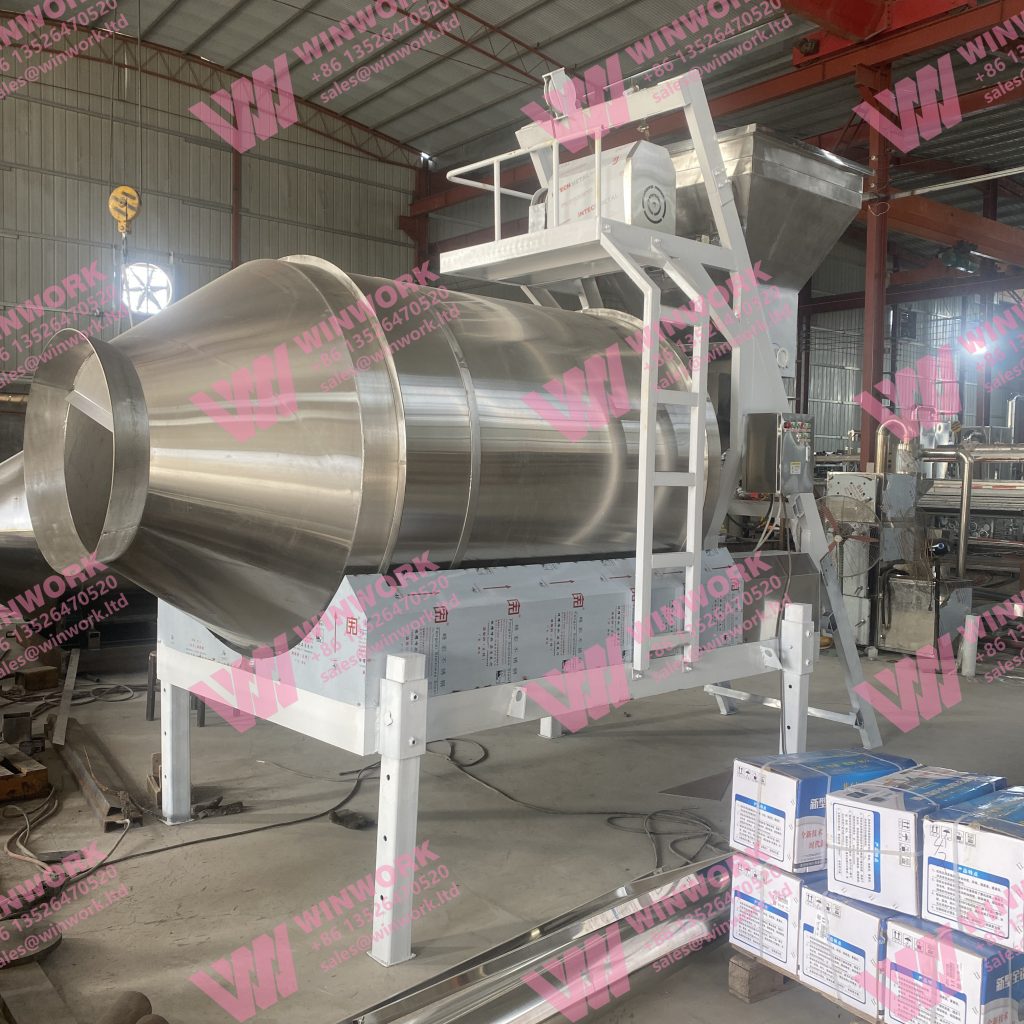
Fertilizer mixing and blending systems are industrial setups that combine different granular or powdered fertilizers into a homogenous blend. These systems are typically used in BB (Bulk Blending) fertilizer plants, NPK compound fertilizer lines, and specialty fertilizer factories.
Key goals include:
-
Achieving precise nutrient ratios
-
Reducing production time
-
Improving blend uniformity
-
Ensuring compatibility of raw materials
These systems are especially important in custom fertilizer production, where each blend is designed to match the specific soil requirements and crop types in a given region.
Core Components of a Fertilizer Mixing and Blending System
A complete fertilizer mixing and blending system usually includes the following components:
| Component | Function |
|---|---|
| Batch Hopper | Temporarily stores raw materials before weighing |
| Automatic Weighing System | Measures precise quantities of each component |
| Mixers (e.g., double shaft, horizontal, or disc mixers) | Blends the components into a uniform product |
| Conveyors (belt or screw) | Transports materials through each processing stage |
| Dust Collection Units | Maintains a clean and safe working environment |
| Control Panel (PLC or manual) | Operates and monitors the entire process |
Depending on the production scale, these systems can be fully automated, semi-automated, or manual.
Types of Fertilizer Mixing and Blending Systems
There are several types of mixing systems designed for different application needs:
1. Double Shaft Mixer Systems
These mixers use two counter-rotating shafts with paddles that create a fluidized zone, allowing for intensive mixing in a short time.
Best for:
-
Large-scale production lines
-
Uniform blending of materials with similar densities
2. Horizontal Mixer Systems
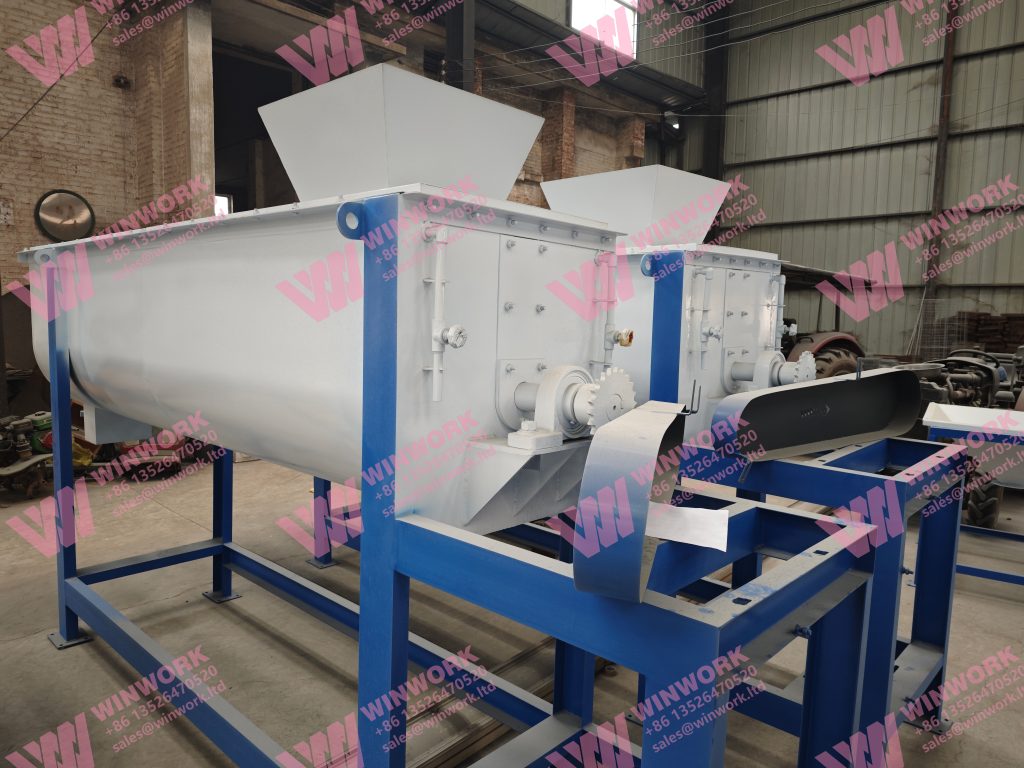
A horizontal U-shaped chamber with rotating paddles ensures high mixing uniformity.
Advantages:
-
Easy to load and unload
-
Suitable for batch blending
-
Consistent blending with low power consumption
3. Disc Mixer Systems
Disc mixers are simple and cost-effective, using a rotating disc to agitate and blend powdered materials.
Ideal for:
-
Small fertilizer plants
-
Budget-conscious operations
4. Continuous Blending Systems
Rather than operating in batches, these systems allow for non-stop material input and output.
Benefits include:
-
High throughput
-
Real-time adjustment
-
Reduced labor and handling time
Why Fertilizer Mixing and Blending Systems Matter
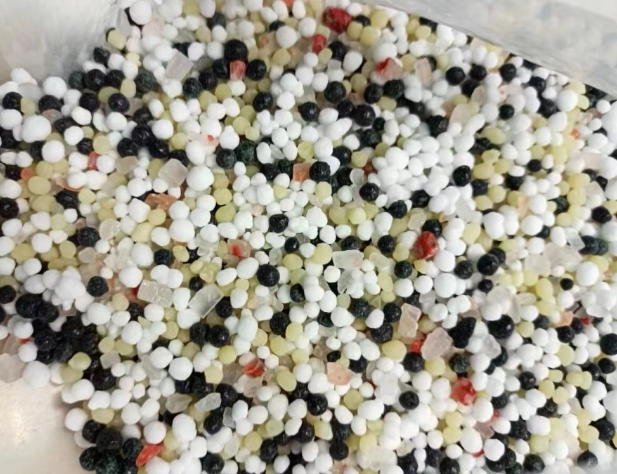
Accurate fertilizer blending has a direct impact on crop performance, operational efficiency, and environmental sustainability. Here’s how:
-
Customized Nutrient Delivery
Farmers can apply fertilizers that match the exact nutrient needs of specific soils and crops, reducing waste and over-application. -
Cost Efficiency
Buying raw nutrient components and blending them on-site is more economical than purchasing pre-mixed formulas. -
Improved Crop Yields
Proper nutrient balance results in healthier crops, higher resistance to disease, and improved yield quality. -
Faster Response to Market Demand
Fertilizer suppliers can quickly produce tailored blends based on current customer requirements.
Automation in Fertilizer Blending Systems
With advancements in control technology, most modern fertilizer mixing and blending systems are now integrated with PLC (Programmable Logic Controller) systems. These allow:
-
Pre-programmed blending recipes
-
Real-time production monitoring
-
Remote access and control
-
Enhanced safety through alarms and emergency stops
Some systems are also integrated with load cells for accurate weighing and sensors to track moisture and density in real time.
Challenges and Solutions in Fertilizer Blending
While the benefits are extensive, there are some common challenges:
-
Segregation of blended materials
Solution: Use coating agents or mixing stabilizers. -
Dust and air pollution
Solution: Add dust collection systems and enclosed conveyors. -
Uneven distribution of micronutrients
Solution: Use pre-granulated micronutrient carriers or liquid micronutrient sprayers. -
Material bridging in hoppers
Solution: Vibrating feeders or flow aids.
A properly designed system, with these factors in mind, significantly reduces operational disruptions.
Case Application: BB Fertilizer Plant in Southeast Asia
A fertilizer factory in Vietnam upgraded their manual mixing station to a fully automated fertilizer mixing and blending system with double shaft mixers and PLC control. The result was:
-
30% increase in productivity
-
20% reduction in labor costs
-
Enhanced consistency in nutrient ratios
-
Improved customer satisfaction with on-time delivery
This transformation illustrates the long-term ROI of investing in modern blending systems.
Conclusion
Whether you’re operating a compact fertilizer plant or a full-scale commercial facility, fertilizer mixing and blending systems are vital tools for efficient, accurate, and scalable fertilizer production. These systems ensure uniform nutrient distribution, reduce operational costs, and allow producers to meet diverse agricultural demands with speed and precision.
For manufacturers and fertilizer suppliers looking to modernize their operations, investing in the right blending equipment and automation system is not just a technical upgrade—it’s a strategic move to stay competitive in a growing global market.


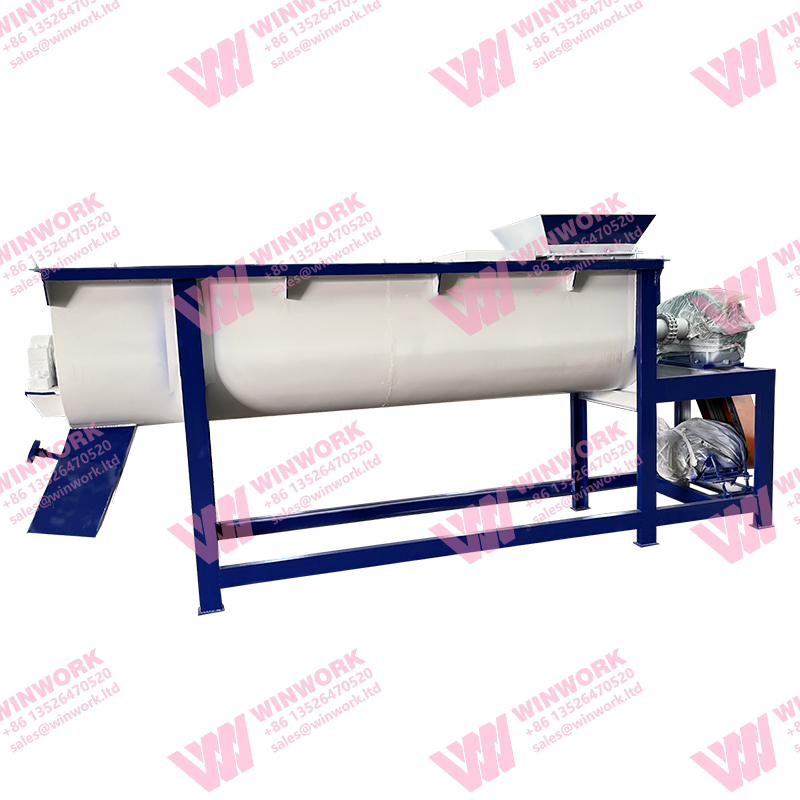
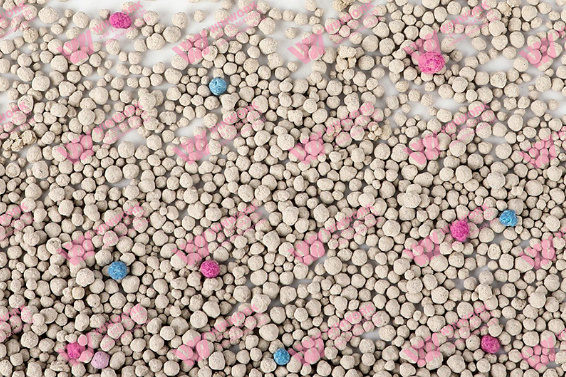
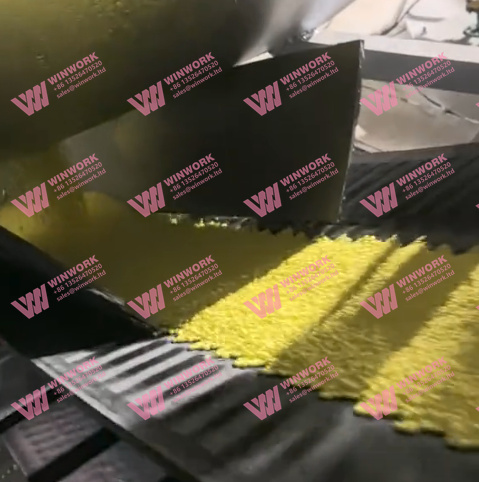
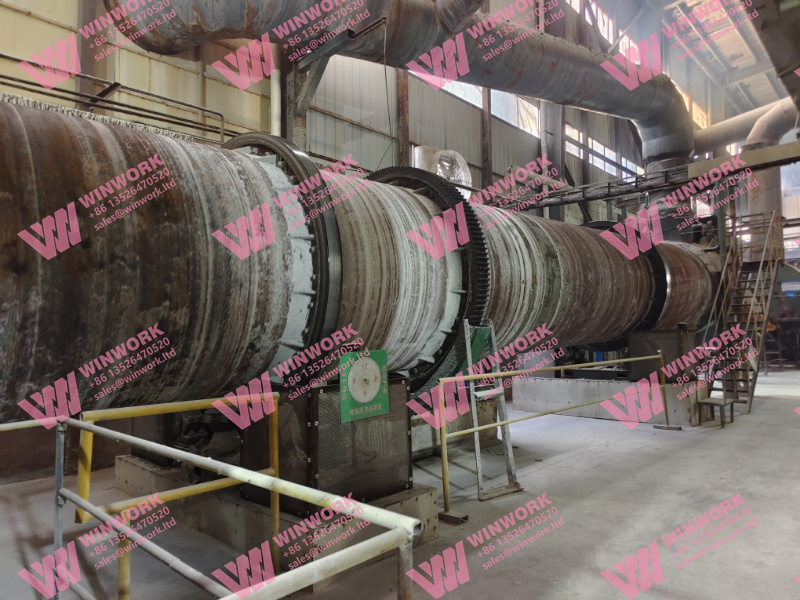
Get A Quote